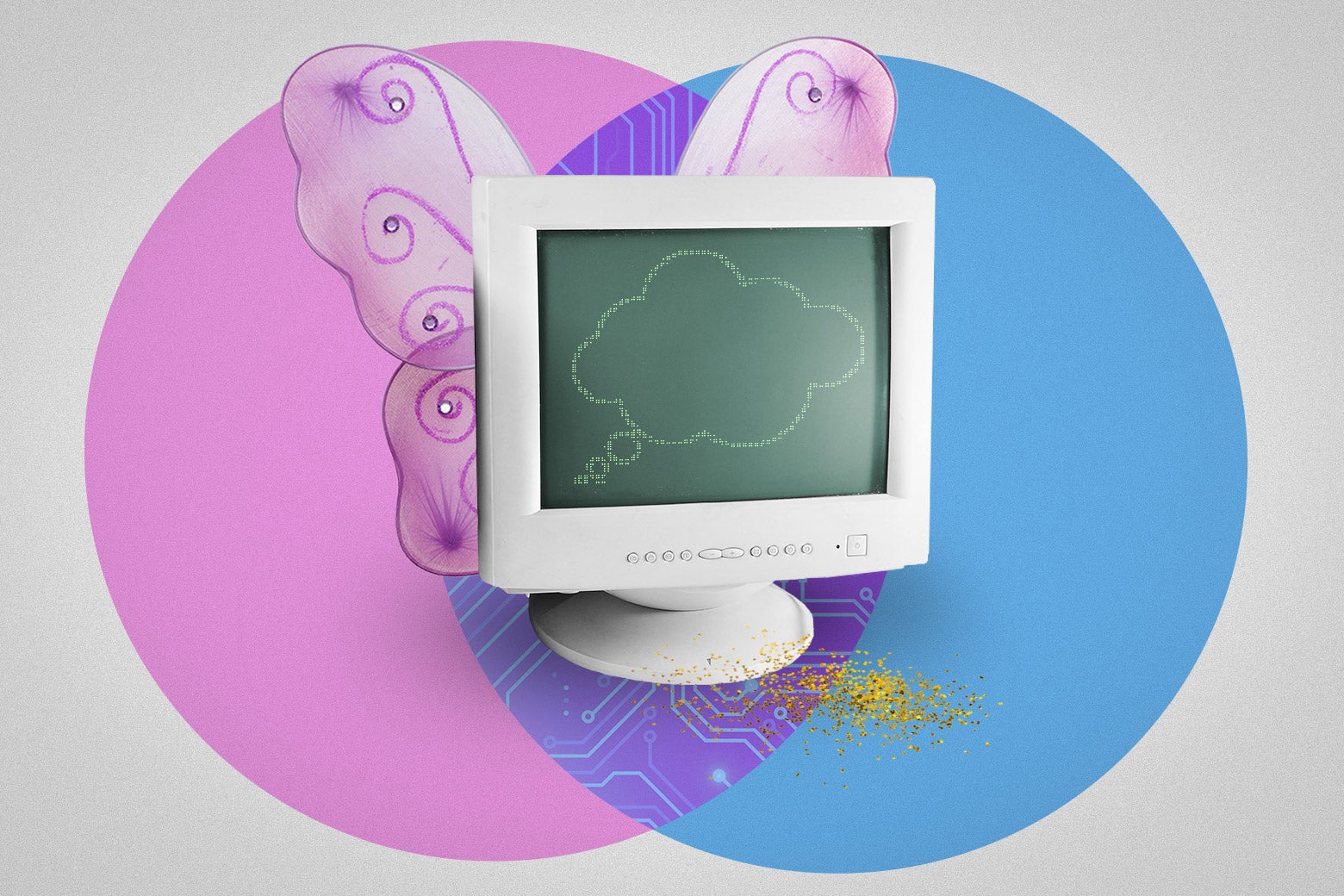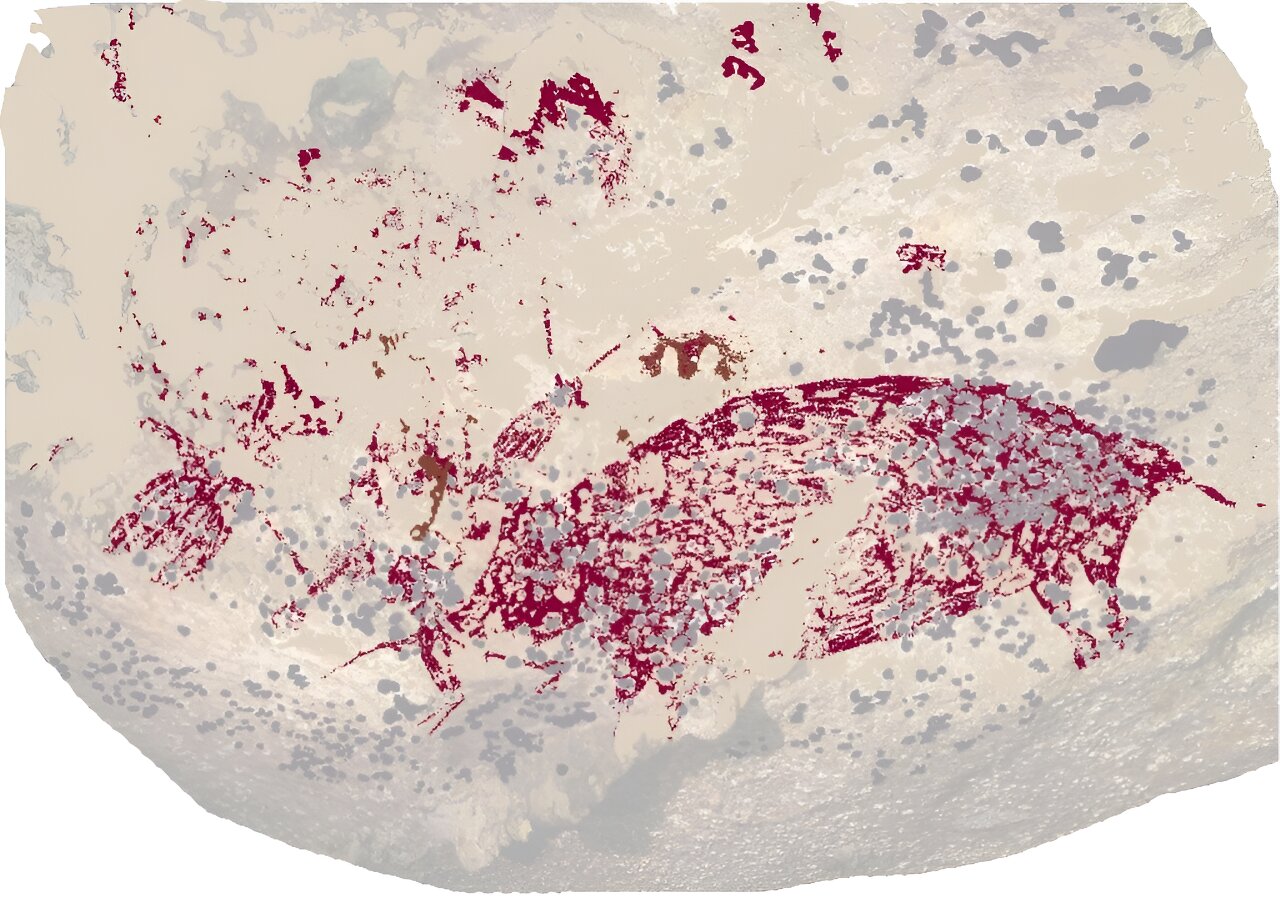Tech
The Original Turing Test Was a Drag Show

ChatGPT can now easily pass any Turing test, a measure of successful A.I. proposed by a founder of computer science, Alan Turing. But contemporary Turing tests leave out the most interesting part of Turing’s original test: the gender-bending.
I can usually spot A.I. writing in my students’ work by the overuse of words like “delve,” but the accuracy of artificial intelligence is impossible to deny. A.I. is being integrated into every aspect of our written culture, from news sources to classrooms to medicine. But in 1950, Turing’s ideas about A.I. were prescient, creative, and, when I read them, surprisingly queer.
Turing is considered one of the “fathers” of digital computers, and he is also celebrated during Pride month because he had the courage to be an all-but-entirely openly gay man in a time in which England was enforcing anti-homosexuality laws. Turing’s sexuality is usually mentioned as ancillary to his technical achievements—but I don’t think it was. I read Turing’s writing and see a lot of queer ideas. When I read Turing’s description of the imitation game, I saw a drag show at the inception of A.I.
In 1951, less than five years after the first fully programmable digital computer was up and running, Turing spoke on the BBC and called the computer a “mechanical mind.” He asked listeners to consider the possibility that a machine may think like a mind. This caused quite a backlash. Turing published a defense of his ideas in the essay “Computing Machinery and Intelligence.” And he replaced the question “Can machines think?” with an imitation game.
Turing starts with a parlor game with a dash of gender fuckery: “It is played with three people, a man (A), a woman (B), and an interrogator (C). The interrogator stays in a room apart from the other two. The object of the game for the interrogator is to determine which of the two is the man and which is the woman.”
Turing imagined both gender and intelligence to be fluid.
In this game, deception is the rule. Turing says that the woman is supposed to be honest. Her best strategy is to be herself, he explained. But the trick is for the man to perform as a woman: “It is A’s [the man’s] object in the game to try and cause C [the interrogator] to make the wrong identification.”
Then, Turing takes his gender-confusing game and adds an extra twist: “What will happen when a machine takes the part of A [the man] in the game? Will the interrogator decide wrongly as often when the game is played like this as he does when the game is played between a man and a woman? These questions replace our original, ‘Can machines think?’ ”
So then, the Turing test started as a competition between a woman and a man, where the man performs as a woman. Then the man is replaced by a computer. Read literally, A.I. is parallel to a man performing as a woman. It was a computer in drag.
This drag show doesn’t have the glitter, death drops, and butterfly wings for eyelashes that we find in RuPaul’s Drag Race. We don’t have the queens, both trans and cis, sashaying away. Still, I find hints of drag culture at the heart of Turing’s hopes for his “mechanical mind.”
Drag culture exuberantly pushes the elastic sensibilities of what a gender can become. It’s high camp and high art. Drag can be found on the dance floors of clubs in most small towns, and on prime-time TV. RuPaul has said for decades, “We’re all born naked, and the rest is drag.” And he also explains that drag queens aren’t men dressed up like women, because “Women don’t really dress like us. We are wearing clothes that are hyperfeminine, that represent our culture’s synthetic idea of femininity.” Queens aren’t trying to fit in as women, they’re too fabulous and cunty for that.
Philosopher Judith Butler writes in her newest book, Who’s Afraid of Gender?, that a guiding question to understand drag is: “How do fictions communicate truths we could not understand through other means?” There is a deeper truth to a drag performance that has nothing to do with the authenticity or naturalness of gender. Drag flaunts how gender is made, explored, and blown up into fantastical dreams.
In his test, I see Turing playing with the performance of intelligence. He’s blowing it up and exploring what intelligence could become. The machine makes no pretense about natural gender or authentic intelligence. It’s a show. And if the show tricks the judge, she wins. Turing had fun with his proposition. His friend Norman Routledge described Turing generally as “shrieking and giggling all the time.” And when Turing read a draft of his essay on the imitation game to his best friend, Robin Gandy, he apparently bubbled over laughing through his entire reading.
As the test continues, Turing continues to dress the computer up. Turing writes with wit that the judge should not be in the same room as the contestants: “We do not wish to penalize the machine for its inability to shine in beauty competitions.” Then, Turing has the interrogator ask the computer questions like, “Will X please tell me the length of his or her hair?”
The computer responds, “My hair is shingled, and the longest strands are about nine inches long.” I love that Turing has the computer describe her excessively long, “shingled” hair, which was an elaborate hairstyle of built-up layers of curls.
Most contemporary versions of the Turing test erase the gendered components of the test. However, I find this is an important moment in queer history. Turing imagined both gender and intelligence to be fluid.
In his defense of thinking machines, Turing commented, “Machines take me by surprise with great frequency,” and that was a mark in the computer’s favor. His dream was for A.I. that can “do something really new.” I feel the same. I’m inspired by creative projects, especially Vauhini Vara’s essay “Ghosts,” in which her engagement with ChatGPT leads her to tell a story of grief that she couldn’t do alone.
ChatGPT can easily pass the Turing test, but I’m cautious. I talked to my colleague, professor Dan Frank, who is a specialist in emerging A.I. writing. Frank has spent the past year helping admin and faculty at the University of California prepare ourselves and our students for writing and thinking critically with ChatGPT. He explained that in some ways, the chatbot can’t create anything original. “It can’t come up with something new, because it literally functions by predicting and choosing along the ‘most likely’ next words,” he said.
But in action, the result is something unique. Frank confessed, “The part of ChatGPT that I love is the fact that it does new and surprising things with its language algorithms. It’s such a strange beast, this thing made of our combinations and recombinations of our worldwide text.” It draws upon that which already exists, and it recombines in a way that can feel fresh.
Turing anticipated this when he wrote about humans: “Who can be certain that ‘original work’ that he has done was not simply the growth of the seed planted in him by teaching, or the effect of following well-known general principles?” Turing’s point is that artificial intelligence and human intelligence aren’t so different.
ChatGPT is actually too good at passing as human. In May, OpenAI released a demo of its voice feature, “Sky,” and the voice was impressively warm and flirty. And the voice was so realistic that it was eerily similar to one particular woman’s voice: Scarlett Johansson’s. Johansson, who played the A.I. platform in the movie Her, had been asked by OpenAI if they could use her voice for their “Sky” audio tech. She said no, and when asked again, she said no again. OpenAI demoed a voice that sounded uncomfortably close to Johansson’s anyway. After widespread objections, the startup has suspended the voice that sounds like Johansson’s. But their assistant feature will continue to use human-like voices; the voices of the women in particular sound like a man’s fantasy of a compliant, subservient woman.
Like the Turing Test, ChatGPT can perform as a woman. But now she serves. A.I. is quickly becoming the most boring version of a woman it can be because that is precisely what many of its users want. In Turing’s imagination, the computer’s performance of womanhood was a game; it was a trick. And she was playing to win.
Two years after Turing proposed his Turing test, he was charged and convicted of “gross indecency” after law enforcement discovered that he was in a sexual relationship with another man. Turing was given a choice: chemical castration or imprisonment. He chose chemical castration, an estrogen-based hormone therapy that preserved his freedom but destroyed his sex drive.
The treatment caused bodily changes that Turing had no control over: He grew breasts, his body bloated with weight and water, and his voice began to change. He wrote to Routledge that the conviction would change him in ways that he couldn’t know. But what he feared most was that his sexuality would undermine his dreams for A.I. He wrote:
I’m afraid that the following syllogism may be used by some in the future.
Turing believes machines think
Turing lies with men
Therefore machines do not think
Yours in distress,
Alan
Ultimately, though, Turing’s concerns did not come true. Even his supposed “crimes” of homosexual acts were eventually pardoned by Queen Elizabeth II in 2013, and the U.K. Parliament granted pardons to all men convicted under its archaic homophobic laws. Today, he’s remembered as a pioneer of A.I. and the digital computer—and an LGBTQ+ icon who was willing to live openly as a homosexual and challenge notions of gender conformity within his drag-coded Turing test in a time when it was dangerous to do so.
What I find exciting about drag is that it takes things from stereotypes of womanhood and amplifies them, twists and bedazzles them. I love staying up too late on a Sunday to tuck dollar bills into Valerie Storm’s sequined bra straps. She’s the star of the Santa Barbara drag scene, and she performs in a shitty bar that smells of sweat, booze, and Red Bull. On Sunday nights, the world seems to spin on the gravitational pull of the Queen’s performance.
Drag remakes womanhood into something entirely different. And at its best, that’s what I hope for A.I. as well. Not that it replicates human women or human intelligence so closely we can’t tell the difference. ChatGPT and other chatbots can draw from the language they are given and turn what humans have written, what we have thought, argued, sung, and sketched, in order to create something that I know is artifice, a fascinating fabrication from which I can’t look away.










